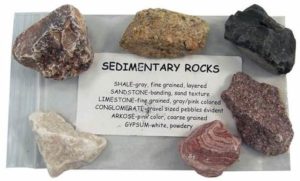
RESERVOIR MANAGEMENT
Understanding the reservoir rocks and fluids is the key for optimal reservoir production and management.
Reservoir characterization aims to construct the most accurate reservoir models possible to gain an accurate understanding of the subsurface that leads to informed well placement, reserves estimation and production planning. Accurate reservoir characterization requires the integration of multi-physics, and multi-domain measurements taken in the field, including well logs, seismic surveys, electromagnetic measurements and production history.
Reservoir characterization enables the quantitative integration of all field data into an updateable reservoir model built by a team of geologists, geophysicists, and engineers. Key techniques used in the process include integrated petrophysics and rock physics to determine the range of lithotypes and rock properties, geophysical inversion to determine a set of plausible seismic-derived rock property models at sufficient vertical resolution and heterogeneity for flow simulation, stratigraphic grid transfer to accurately move seismic-derived data to the geologic model, and flow simulation for model validation and ranking to determine the model that best fits all the data.
ROCK PHYSICS AND PETROPHYSICS
The first step is establishing a relationship between petrophysical key rock properties and elastic properties and electrical properties of the rock. This is required in order to find common ground between the well logs and geophysical
measurements, such as seismic and electromagnetic data. When correlated, well logs and geophysical data can be used to create a fine-scale 3D model of the subsurface.
When the petrophysical rock model is complete, a statistical database is created to describe the rock types and their known properties such as porosity and permeability. Lithotypes are described, along with their distinct elastic properties.

GEOPHYSICAL INVERSION
Geophysical inversion techniques combine well and geophysical data to produce multiple equally plausible 3D models of the elastic and electrical properties of the reservoir. We combine both seismic and electromagnetic measurements to obtain the most plausible model elastically and electrically. Both deterministic inversion and stochastic inversion can be employed.
We use geostatistical inversion procedures to detect and delineate thin reservoirs otherwise poorly defined. Bayesian based geostatistical inversion addresses the vertical scaling problem by creating seismic derived rock properties with vertical sampling compatible to geologic models. All field data is incorporated into the geostatistical inversion process
This statistical approach creates multiple, equi-probable models consistent with the seismic, wells, and geology. Geostatistical inversion simultaneously inverts for impedance and discrete properties types, and other petrophysical properties such as porosity can then be jointly co-simulated.
Uncertainty is quantified by using random seeds to generate slightly differing realizations, particularly for areas of interest. This process improves the understanding of uncertainty and risk within the model.

STRATIGRAPHIC GRID TRANSFER
Following geostatistical inversion and in preparation for history matching and flow simulation, the static model is re-gridded and up-scaled. The transfer simultaneously converts time to depth for the various properties and transfers them in 3D from the seismic grid to a corner-point grid. The relative locations of properties are preserved, ensuring data points in the seismic grid arrive in the correct stratigraphic layer in the corner point grid.
MODEL VALIDATION AND RANKING
In the last step, flow simulation continues the integration process by bringing in the production history. This provides a further validation of the static model against history. A representative set of the model realizations from the geostatistical inversion are history matched against production data. If the properties in the model are realistic, simulated well bottom hole pressure behavior should match historical (measured) well bottom hole pressure. Production flow rates and other engineering data should also match.

Based on the quality of the match, some models are eliminated. After the initial history match process, dynamic well parameters are adjusted as needed for each of the remaining models to improve the match. The final model represents the best match to original field measurements and production data and is then used in drilling decisions and production planning.
We have a team of experienced scientists and engineers to help you build the most accurate geological and reservoir models to optimize the lifetime of performance of your reservoir. Contact us for a consultation.
Commodities
| M | T | W | T | F | S | S |
|---|---|---|---|---|---|---|
| 1 | 2 | 3 | 4 | 5 | 6 | 7 |
| 8 | 9 | 10 | 11 | 12 | 13 | 14 |
| 15 | 16 | 17 | 18 | 19 | 20 | 21 |
| 22 | 23 | 24 | 25 | 26 | 27 | 28 |
| 29 | 30 | |||||

